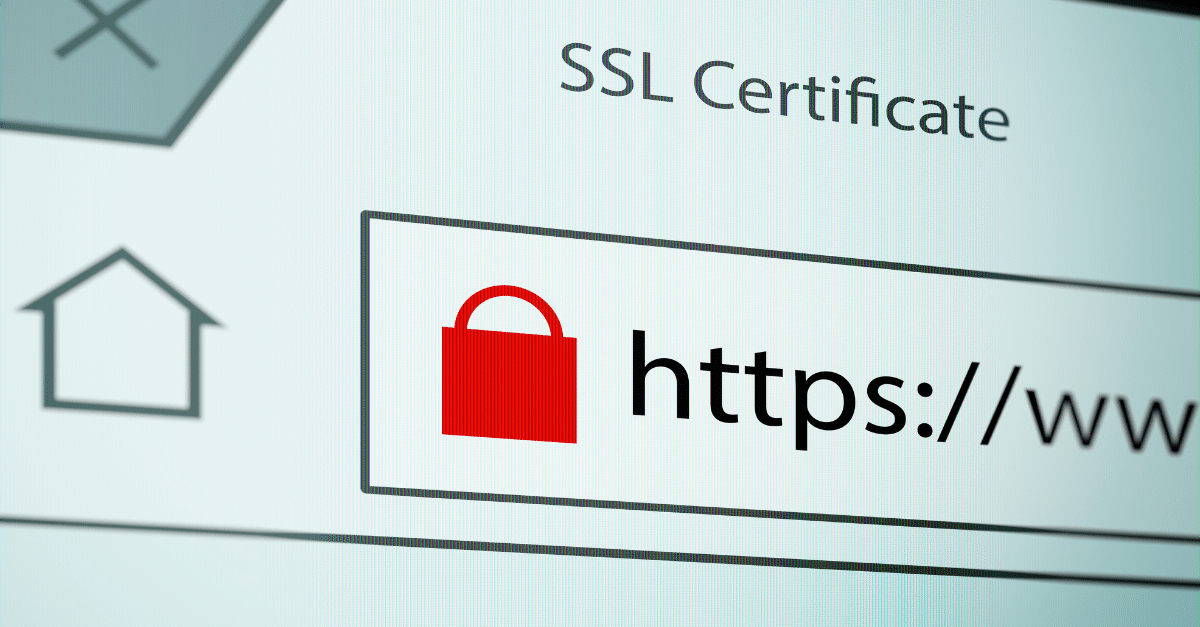Share Article
What You Need to Know about SSL Certificates
This article will explore the concept of SSL certificates, their functionality, and why they are vital for safeguarding your online presence.
19 February 2024 | 10 min read | By Henrik Dürr

Introduction
In today’s digital age, online security is of the utmost importance. One crucial aspect of online security is the use of SSL certificates. This article will explore the concept of SSL certificates, their functionality, and why they are vital for safeguarding your online presence.
What is an SSL Certificate?
An SSL (Secure Sockets Layer) certificate is a digital certificate that establishes a secure encrypted connection between a web server and a web browser. It ensures that the data transmitted between the two parties remains private and protected from unauthorised access.
SSL certificates work through a process called encryption. When users visit a website secured with an SSL certificate, their browser initiates a handshake with the web server. This handshake involves a series of communications where the browser and server establish the encryption algorithm and cryptographic keys. Once the connection is established, all the data exchanged between the browser and the server is encrypted and cannot be viewed or tampered with by anyone other than the intended recipient.
Different types of SSL certificates are available, depending on the level of validation and the number of domains they secure. The most common types include domain-validated (DV), organisation-validated (OV) and extended validation (EV) certificates.
Domain validated (DV) certificates are the simplest and quickest to obtain. They verify only the ownership of the domain and are suitable for personal websites or blogs.
Organisation validated (OV) certificates require additional validation to verify the organisation’s identity. They are suitable for small businesses and organisations.
Extended validation (EV) certificates provide the highest level of trust and security. They undergo a rigorous validation process, including the verification of legal existence, physical location and operational status of the organisation.
How do SSL certificates work?
SSL ensures that any data transferred between users and websites, or between two systems, remains impossible to read. It uses encryption algorithms to scramble data in transit, which prevents hackers from reading it as it is sent over the connection. This data includes potentially sensitive information such as names, addresses, credit card numbers or other financial details.
The process works like this:
- A browser or server attempts to connect to a website (i.e. a web server) secured with SSL.
- The browser or server requests the web server to identify itself.
- The web server sends the browser or server a copy of its SSL certificate in response.
- The browser or server checks to see whether it trusts the SSL certificate. If it does, it signals this to the web server.
- The web server returns a digitally signed acknowledgement to start an SSL-encrypted session.
- Encrypted data is shared between the browser or server and the web server.
This process is sometimes referred to as an “SSL handshake”. While it sounds like a lengthy process, it takes place in milliseconds.
When an SSL certificate secures a website, the acronym HTTPS (which stands for HyperText Transfer Protocol Secure) appears in the URL. Only the letters HTTP – i.e. without the S for Secure – will appear when there is no SSL certificate. A padlock icon will also display in the URL address bar. This signals trust and provides reassurance to those visiting the website.
To view an SSL certificate’s details, you can click the padlock symbol located within the address bar in your browser. The details that are typically included within SSL certificates include:
- The domain name that the certificate was issued for
- Which person, organisation or device it was issued to
- Which Certificate Authority issued it
- The Certificate Authority’s digital signature
- Associated subdomains
- Issue date of the certificate
- The expiry date of the certificate
- The public key (the private key is not revealed)
The Benefits of SSL Certificates
SSL certificates offer numerous benefits for website owners and users alike. Firstly, they provide a secure connection, ensuring that sensitive information such as the login credentials, personal data and financial details are encrypted and protected from interception.
Moreover, SSL certificates enhance trust and credibility. When visitors see the padlock icon or the “https” prefix in the URL, they know that the website they are visiting is secure. This can boost user confidence, encourage interactions and increase conversions for businesses.
From an SEO perspective, SSL certificates also play a significant role. Search engines like Google prioritise websites with secure connections, giving them a slight ranking boost in the search results. This means that having an SSL certificate can improve your website’s visibility and organic traffic.
An SSL certificate helps to secure information such as:
- Login credentials
- Credit card transactions or bank account information
- Personally identifiable information — such as full name, address, date of birth, or telephone number
- Legal documents and contracts
- Medical records
- Proprietary information
How to Obtain and Install an SSL Certificate
Obtaining and installing an SSL certificate may seem complex, but it can be broken down into a few simple steps. First, you must choose the type of SSL certificate that suits your needs and purchase it from a trusted certificate authority (CA).
Once you have obtained the certificate, you must install it on your web server. The process may vary depending on your hosting provider and server configuration. The hosting provider often offers an easy-to-use interface or a one-click SSL installation option. Alternatively, you can manually install the certificate by following the instructions from the CA or your hosting provider.
The cost of SSL certificates can vary depending on the type, level of validation and additional features. DV certificates are generally more affordable, while OV and EV certificates are more expensive due to the additional validation processes involved.
SSL Certificate Errors and Troubleshooting
While SSL certificates are meant to ensure secure connections, issues can occasionally arise. It is important to be aware of common SSL certificate errors and how to troubleshoot them.
One common error is the “SSL certificate not trusted” or “SSL certificate invalid” message. This can occur when a trusted CA has not issued the certificate or if the browser cannot verify the certificate’s authenticity. In such cases, you should check if a reliable CA has installed and issued the certificate correctly.
Another error is the “SSL certificate expired” message. SSL certificates have a validity period, typically one to two years. When a certificate expires, it needs to be renewed. If you encounter this error, you should immediately renew the certificate with your CA and replace the old certificate on your web server.
The key to troubleshooting SSL certificate errors is to ensure that the certificate is properly installed, up to date and issued by a trusted CA.
Conclusion
SSL certificates are crucial in maintaining a secure online environment. They provide data encryption, enhance trust and credibility, and positively impact search engine rankings. By obtaining and properly installing an SSL certificate, you can protect your users’ information, boost your website’s credibility and ensure a safer online experience for everyone involved.
Regarding online security, SSL certificates are not optional; they are necessary. Invest in a reputable SSL certificate today and enjoy the peace of mind of knowing your website and its data are safeguarded!
Submit Your Technical Queries Here for Expert Assistance!
We will contact you as soon as possible.
Please enter your details below.

